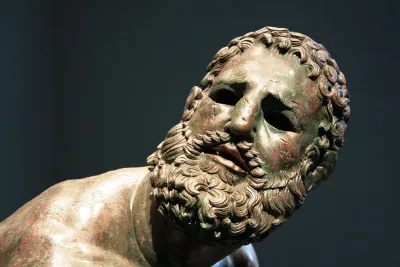TWIL #03: From AI Video's to Safe Nuclear Energy

The future of video is AI driven
This week my feed filled up with video’s created with Google’s new AI video tool, Veo 2, and I was blown away by the quality. The level of realism, fluid motion, and nuanced detail show how far AI-generated video has come. While challenges remain it’s clear that the potential of AI in video production is massive. Veo 2, along with other emerging tools, is signaling a fundamental shift in how content is created, opening up new possibilities for both amateurs and professionals alike.
The introduction of AI-powered video tools will fundamentally reshape the creative landscape in several ways. First, it democratizes high-quality content creation by reducing the need for expensive equipment, large teams, and lengthy production timelines. Second, the speed at which AI can generate content will allow for rapid prototyping, enabling creatives to experiment and iterate ideas faster than ever before. Finally, the role of traditional creatives, such as editors, animators, and cinematographers, will likely evolve, shifting focus from hands-on execution to directing AI to achieve desired results.
However, with these advancements come new challenges. Questions around originality, copyright, and artistic integrity will become increasingly important as AI-generated content floods the market. So many questions… but also so many possibilities!
The surprising safety of modern nuclear energy
After watching Inside Bill's Brain, I was intrigued by Bill Gates' work with TerraPower, a company revolutionizing nuclear energy. Their Natrium reactor stands out for its:
- Advanced safety features, including passive cooling systems that rely on natural convection rather than mechanical pumps, reducing the risk of failure and ensuring the reactor remains safe even during power outages.
- Molten salt storage, which absorbs and retains excess thermal energy, allowing it to be converted into electricity when demand is high. This approach mirrors storage solutions used in renewable energy, helping to stabilize the grid and provide consistent power output.
- Reusing nuclear materials, such as depleted uranium and spent fuel, to generate energy more efficiently and sustainably. This reduces nuclear waste and makes better use of existing resources, addressing long-term environmental concerns.
Modern nuclear technology has come a long way. While many still associate it with disasters like Chernobyl and Fukushima, today's reactors incorporate multiple layers of safety, making catastrophic failures highly unlikely.
With public perception slowly changing, could nuclear energy be the key to a sustainable future?
What do you think?
By the way: the first Terrapower plant is scheduled to be operational in 2030 and will be situated in Wyoming.
Niantic is 3D mapping the world

This week I discovered that Niantic, the company behind the very popular Pokémon Go, is doing something incredible with neural mapping. While LLMs (Large Language Models like ChatGPT) process words and phrases to provide human-like responses, Niantic’s technology is building a detailed 3D map of our surroundings. They call it a Large Geospatial Model (LGM), which will allow AI to "see" and interact with the world just like we do. 🤯
I think the potential for this tech is just as exciting as what LLMs have done for communication, but with a focus on blending digital and physical spaces.
The fun use case: Imagine playing a game where Pikachu doesn’t just float on your screen but actually runs behind a park bench or peeks around a street corner. Beyond gaming, this could lead to immersive AR tours where historical figures guide you through famous landmarks, real-time navigation that adapts to obstacles like crowds, or even virtual interior design tools that let you preview furniture in your home with accurate scale and positioning.

And the best part? You can already play around with their 3D scanning tool Scaniverse.
I came across the following inspiring story through Dennis Berkhof from Bit Academy, who is doing an awesome job training the next generation of techies!
From Textbooks to Text Messages

In 2021, Zimbabwean tutor Maxwell Chimedza turned educational challenges into opportunities by using WhatsApp to teach A-Level students. Without formal qualifications or access to traditional resources, he leveraged the widely available messaging app to provide lessons, mock tests, and feedback for his students.
His approach helped students achieve top results, rivaling elite schools. For me Chimedza’s story demonstrates how thinking in possibilities can overcome obstacles, showing that quality education could be delivered through simple, accessible technology. Especially when combined with a supportive growth mindset that Chimedza clearly has. His success proves that with creativity and resourcefulness, even the most basic tools can revolutionize learning in underserved communities.
What it teaches me:
- Embrace existing tools: Innovation doesn’t always require cutting-edge technology; sometimes, the most accessible tools can create the biggest impact.
- Think beyond limitations: Challenges can be opportunities when approached with a mindset focused on solutions rather than obstacles.
- Stay resilient and positive: With this mindset, even the toughest challenges can be overcome.
What else
- You know that feeling when you stumble upon a weird fact that just doesn’t seem to make sense? Well, meet the Giffen Paradox, an economic oddity where people buy more of something when its price goes up.
- Charles Darwin is considered one of the earliest innovators of the office chair, modifying his armchair by replacing its legs with wheels from his bed to move around his workspace more efficiently.

That’s all folks!





